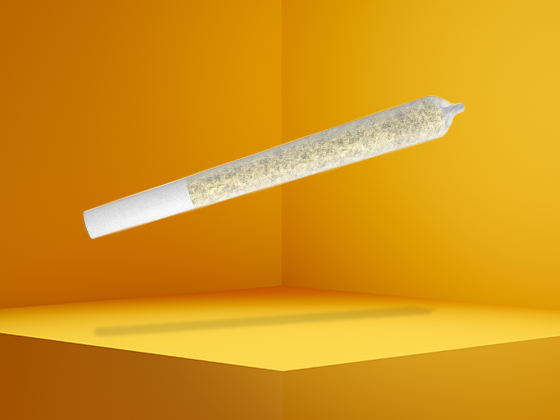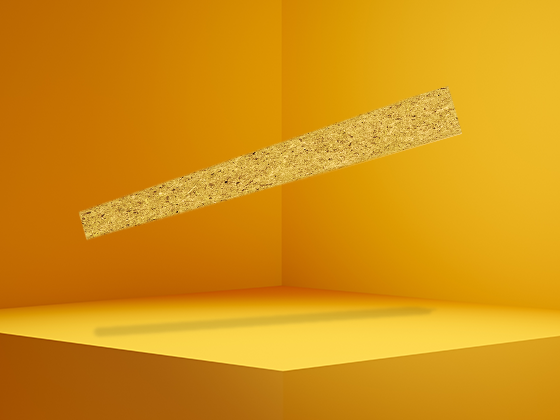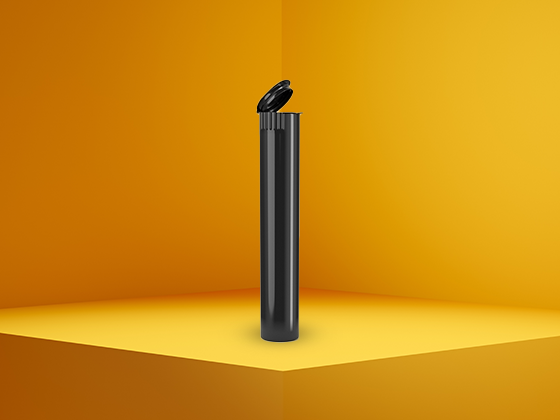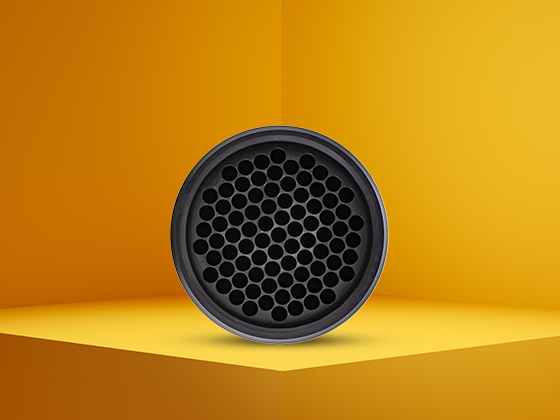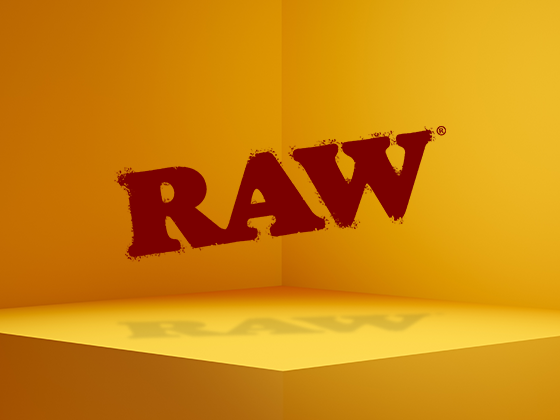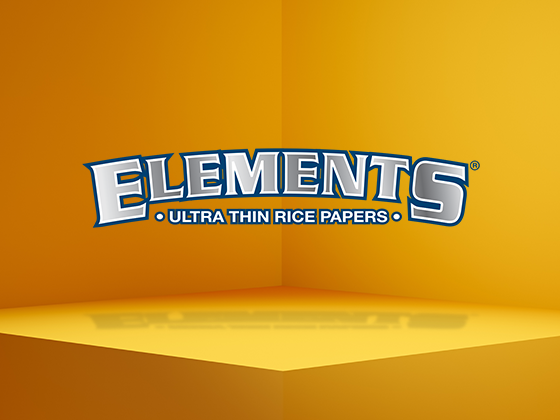Resources
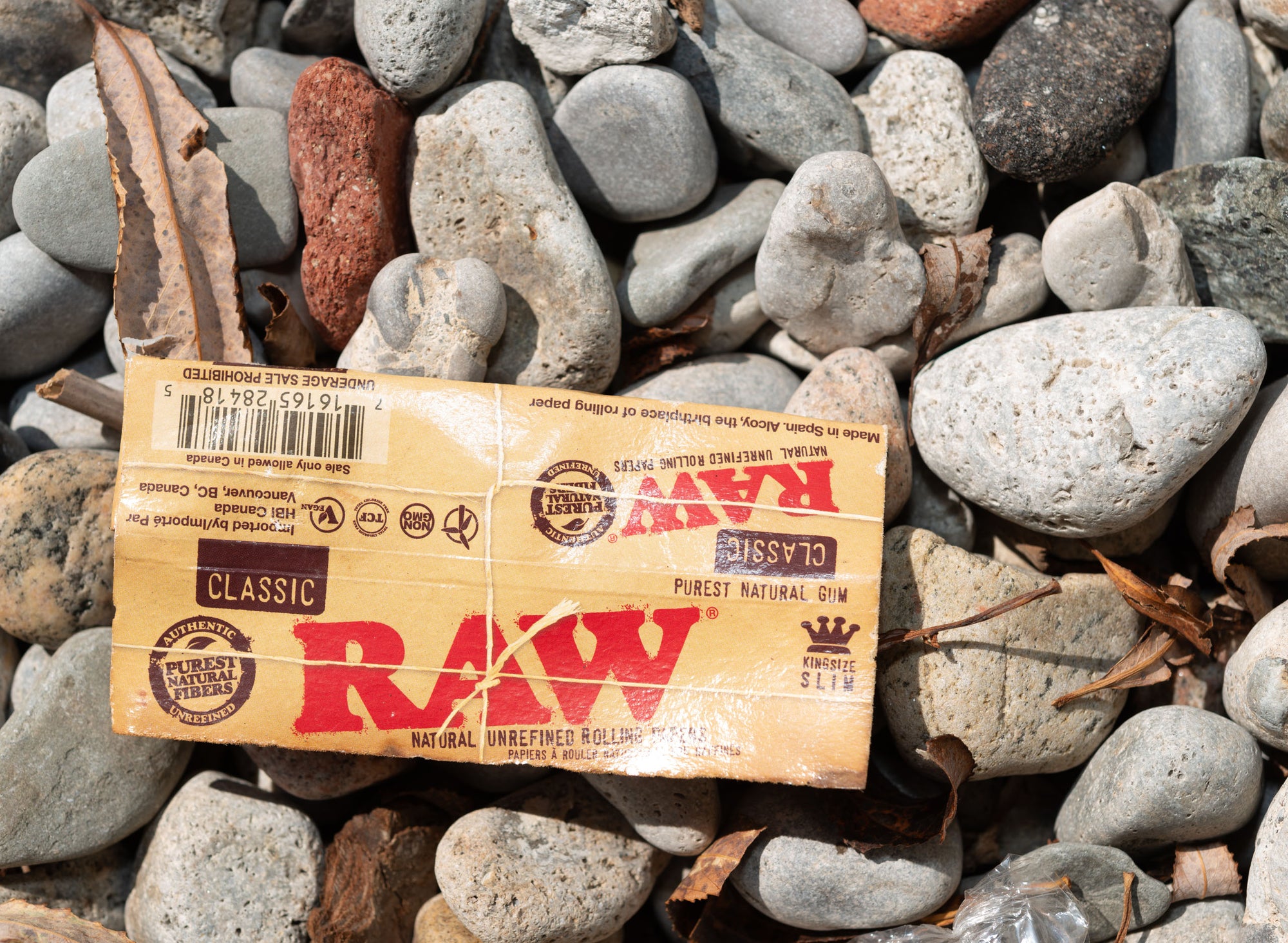
flower
The Ultimate Guide to RAW Rolling Papers: Types and Uses
Table of Contents
Introduction to RAW Rolling Papers
Types of RAW Rolling Papers
RAW Classic
RAW Organic Hemp
RAW Black
RAW Accessories and Complementary Products
Rolling Techniques for RAW Papers
Why Authenticity Matters with RAW Products
Comparing RAW with Alternative Rolling Papers
The Future of Rolling Papers: Innovations and Sustainability
nnThe Ultimate Guide to RAW Rolling Papers: Types and UsesnnRAW rolling papers have revolutionized the smoking experience with their natural approach to paper manufacturing. Unlike conventional rolling papers, RAW wrap papers are unrefined, unbleached, and free from additives that can affect taste and burn quality. This comprehensive guide explores everything you need to know about these popular rolling papers, their varieties, and how to get the most out of them.nnTypes of RAW Rolling PapersnnRAW offers several distinct lines of rolling papers, each with unique characteristics designed to suit different preferences and purposes. Understanding these differences helps users select the perfect paper for their needs.nnRAW ClassicnnRAW Classic papers are the brand's original offering, featuring a light tan color that comes from their unbleached, natural composition. These papers are made from a blend of unrefined plant fibers and natural plant gums, creating a thin yet sturdy wrapping paper that burns evenly and slowly. RAW Classic papers come in various sizes, from single wide to king size, accommodating different rolling preferences.nnRAW Organic HempnnFor those seeking an even more natural option, RAW Organic Hemp papers are made from 100% hemp fibers. These papers are slightly thicker than the Classic line but maintain excellent burning properties. The organic certification ensures that the hemp is grown without pesticides or chemicals, making these papers a favorite among health-conscious consumers. Many users report a smoother smoke and cleaner taste with these hemp-based papers.nnRAW BlacknnRAW Black represents the ultra-thin premium line in the RAW family. These papers are 20% thinner than even the Classic papers, creating an experience where the paper is barely noticeable. The controversy and popularity of RAW Black papers stem from their delicate nature, which provides a pure taste but requires more skill to roll properly.nnnHighlight: All RAW rolling papers use natural gum Arabic as an adhesive rather than chemical glues, contributing to their clean-burning properties and reputation for quality.nnnRAW Accessories and Complementary ProductsnnBeyond rolling papers, RAW has expanded into a complete ecosystem of smoking accessories:nnnRAW Tips and Filters: Pre-cut cardboard filter tips that provide structure to hand-rolled cigarettesnRolling Trays: Designed to contain materials and facilitate the rolling processnRolling Machines: Mechanical devices that simplify rolling for beginners or those with dexterity issuesnPre-rolled Cones: Ready-to-fill paper cones for those who struggle with hand-rollingnnnFor those who prefer pre-rolled options, we offer premium alternatives like Hara Cones that provide the same quality experience with added convenience, perfect for both personal use and retail settings.nnRolling Techniques for RAW PapersnnRAW wrapping paper requires specific techniques to achieve the perfect roll, especially with the thinner varieties like RAW Black. Mastering the art of rolling with RAW papers involves several key steps:nnnProper grinding of materials to ensure even distributionnEven placement along the crease of the papernTucking technique that creates a tight cylinder without tearing the papernSealing with just the right amount of moisture applied to the gum linennnBeginners often find that starting with RAW Classic papers before progressing to the thinner varieties helps build the necessary skills. The slightly more forgiving nature of the Classic papers makes them ideal for learning proper technique.nnWhy Authenticity Matters with RAW ProductsnnAs RAW's popularity has grown, so has the market for counterfeit products. Authentic RAW rolling papers have specific safety and composition standards that knockoffs often lack. Counterfeit papers may contain harmful chemicals, inconsistent burning properties, or inferior materials.nnTo identify genuine RAW products, look for:nnnThe RAW watermark visible when held to lightnCriss-cross watermark pattern unique to RAW papersnProper packaging with correct spelling and authentic RAW brandingnQR codes on newer packaging that verify authenticitynnnComparing RAW with Alternative Rolling PapersnnWhile RAW has captured significant market share, several alternatives exist. When comparing options, consider these factors:nnn
Thickness: RAW papers tend to be thinner than many competitors, though brands like Elements and OCB also offer ultra-thin optionsn
Material: While RAW focuses on unbleached and hemp papers, some competitors use flax, rice, or other plant fibersn
Additives: Unlike flavored papers, RAW maintains a purist approach with no added flavorsn
Burning properties: RAW's even, slow burn compares favorably to many alternativesnnnFinding authentic RAW products from authorized retailers ensures you're getting the genuine experience the brand is known for.nnThe Future of Rolling Papers: Innovations and SustainabilitynnThe rolling paper industry continues to evolve, with RAW leading many innovations. RAW's packaging and presentation increasingly emphasize sustainability, with recycled materials and plastic-free options becoming standard.nnAs consumer preferences shift toward more environmentally conscious products, RAW and other manufacturers are responding with biodegradable packaging, sustainable sourcing practices, and carbon-neutral manufacturing processes. This evolution reflects broader industry trends toward responsibility and sustainability while maintaining the quality that enthusiasts expect.nnWhether you're new to RAW rolling papers or a longtime user, understanding the various options, proper techniques, and how to identify authentic products ensures the best possible experience with these popular natural papers.
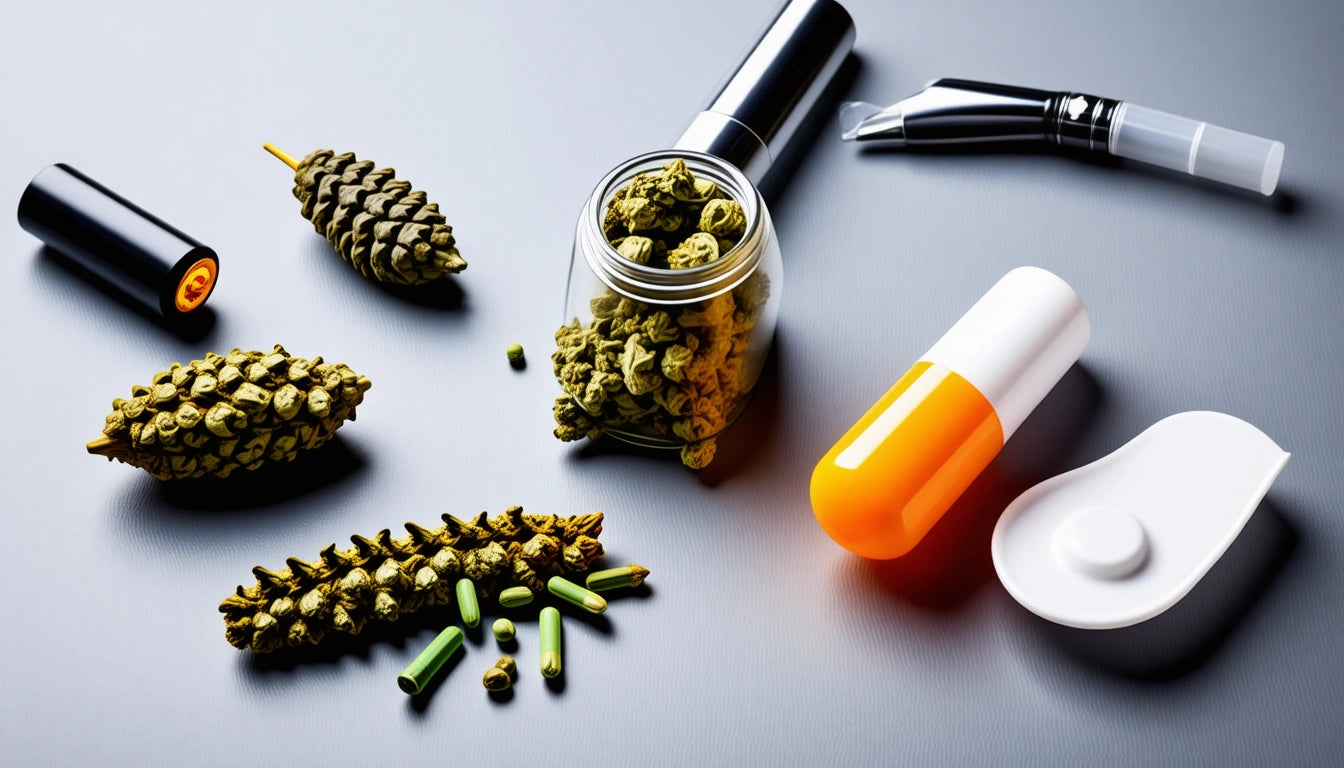
flower
Effective Methods for Extinguishing a Pre-Roll Safely
Table of Contents
Why Properly Extinguishing Your Pre-Roll Matters
Gentle Methods to Preserve Your Pre-Roll
Quick Methods for On-the-Go Situations
What to Avoid When Putting Out a Pre-Roll
Proper Storage After Extinguishing
Safety Best Practices for Pre-Roll Consumption
Knowing how to put out a preroll properly is an essential skill for cannabis consumers. Whether you're saving the remainder for later or need to extinguish it quickly in an unexpected situation, using the right technique preserves your product and prevents potential hazards. This guide covers the best methods to safely extinguish your pre-roll while maintaining its quality for future enjoyment.Why Properly Extinguishing Your Pre-Roll MattersProperly extinguishing a pre-roll serves multiple important purposes. First, it prevents waste by allowing you to save partially consumed product. Second, it eliminates fire hazards that could result from improperly discarded smoking materials. Finally, it helps preserve the flavor profile and potency of your remaining cannabis for later consumption.According to research on pre-roll shelf life, properly extinguished and stored pre-rolls can maintain their quality for weeks. However, repeatedly relighting can degrade both flavor and potency, making proper extinguishing techniques even more important.Gentle Methods to Preserve Your Pre-RollThe Tap and Twist MethodThis method is ideal for preserving your pre-roll for later use:
Gently tap the burning end against an ashtray to remove loose ash
Carefully twist the burning tip against the ashtray surface
Continue twisting until the ember is completely extinguished
Inspect to ensure no embers remain active
This technique minimizes damage to the paper and preserves the remaining cannabis. For premium pre-rolls, especially those made with high-quality custom cones that feature specialized filters and papers, gentle extinguishing helps maintain the product's integrity.The Snuff Box MethodFor those looking for a purpose-built solution:
Use a dedicated pre-roll snuff box or container
Place the burning end into the oxygen-restricting chamber
Close the lid to cut off oxygen supply
Wait 30 seconds before checking if fully extinguished
Many cannabis accessory companies now offer specialized snuff boxes designed specifically for pre-rolls. These containers create an oxygen-deprived environment that quickly extinguishes the ember without damaging the remaining product.Highlight: Never use water to extinguish a pre-roll you plan to relight later, as moisture will ruin the paper and cannabis inside.Quick Methods for On-the-Go SituationsSometimes you need to put out a pre-roll quickly when you're away from home or proper equipment. Mastering pre-roll techniques includes knowing these quick extinguishing methods:The Pocket SnuffWhen you're on the go:
Remove the burning cherry by gently tapping it off
Place the pre-roll in a metal container or doob tube
Ensure the container is closed tightly
Check that no smoke is escaping
Many consumers carry a small metal tube specifically for this purpose. These tubes are typically smell-proof and fireproof, making them ideal for on-the-go storage.Emergency Ground MethodAs a last resort when nothing else is available:
Find a non-flammable surface (concrete, bare dirt)
Gently press just the burning tip against the surface
Twist slightly to ensure the ember is extinguished
Avoid crushing the entire pre-roll
This method is less ideal for preservation but works in emergency situations. Always ensure you're not creating a fire hazard or littering when using this method.What to Avoid When Putting Out a Pre-RollCertain extinguishing methods can damage your pre-roll or create hazards:
Never use water if you plan to relight (ruins the product)
Avoid smashing or crushing the entire pre-roll
Don't place in flammable containers while still hot
Never toss a burning pre-roll into trash or outdoors
Avoid leaving partially extinguished pre-rolls unattended
These improper methods not only waste product but can create fire hazards or environmental pollution. Proper lighting techniques paired with proper extinguishing methods create the best overall experience.Proper Storage After ExtinguishingOnce your pre-roll is properly extinguished, storing it correctly preserves its quality:
Use an airtight container like a doob tube
Store in a cool, dark place away from direct sunlight
Consider using humidity control packets for longer storage
Keep away from strong odors that could affect flavor
Understanding pre-roll weights and composition helps you appreciate why proper storage matters. Smaller, half-gram pre-rolls may dry out faster than larger ones, making proper storage even more crucial.Safety Best Practices for Pre-Roll ConsumptionBeyond knowing how to put out a preroll, following these safety practices ensures a better overall experience:
Always have a proper ashtray or extinguishing tool nearby
Never leave burning pre-rolls unattended
Consider using a pre-roll holder to minimize direct contact with paper
Inspect previously extinguished pre-rolls before relighting
Discard pre-rolls that show signs of mold or excessive dryness
Safety consciousness extends to product selection as well. Quality pre-roll brands often use better papers and filters that burn more evenly and are easier to extinguish properly.By mastering these techniques for how to put out a preroll, you'll maximize your cannabis experience while minimizing waste and safety concerns. Whether you're a casual consumer or connoisseur, these methods ensure you can enjoy your pre-rolls on your own schedule, preserving quality between sessions.
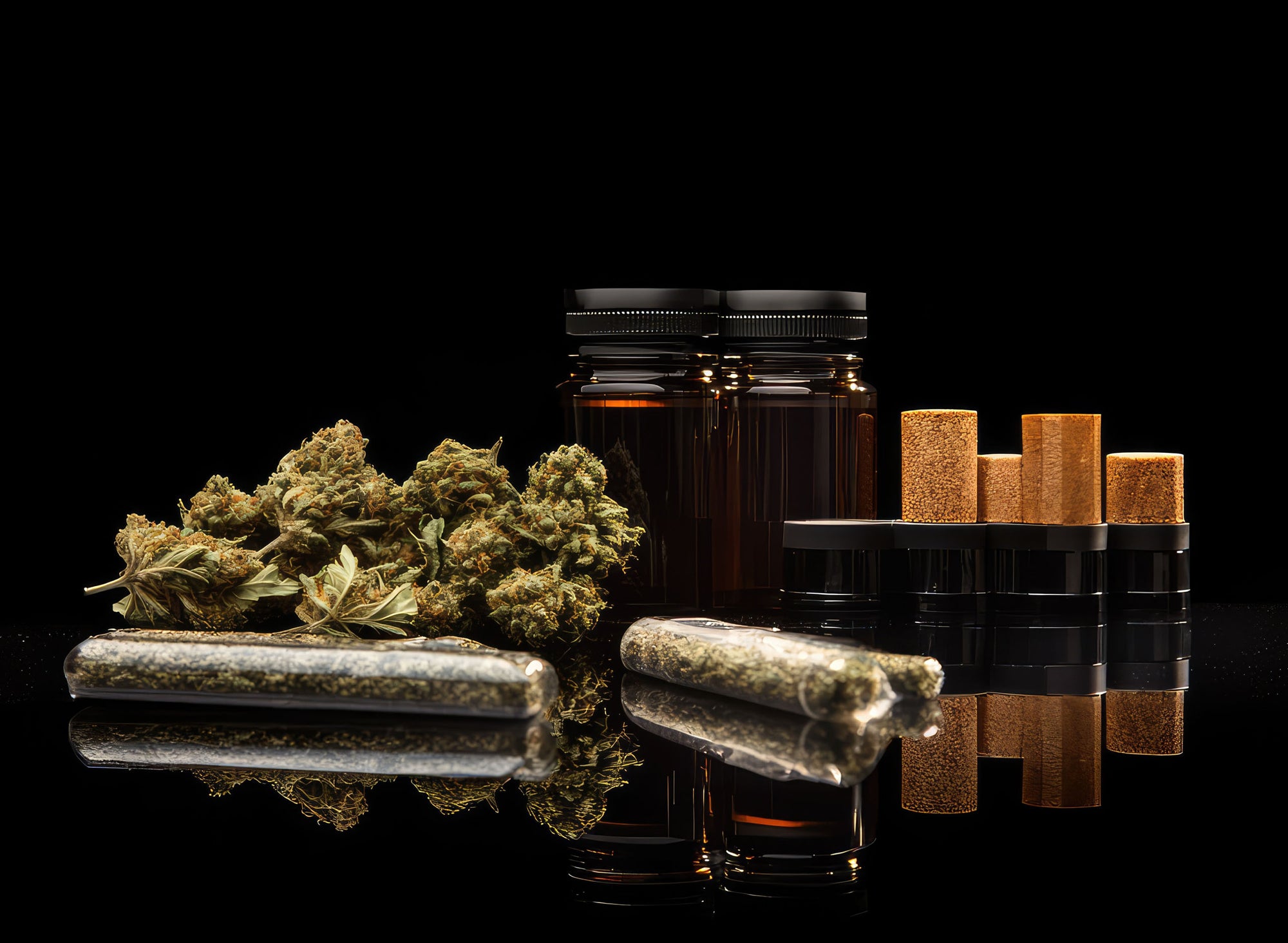
branding
Exploring RAW Terpene Infused Cones: A Guide to Terps and Their Benefits
Table of Contents
What Are RAW Terpene Infused Cones?
Understanding Terpenes: Nature's Aromatic Compounds
RAW Terpene Varieties and Their Unique Properties
Benefits of RAW Terps in Pre-Rolled Cones
How to Use RAW Terpene Infused Cones
The Future of Terpene Infusion in Rolling Papers
nnExploring RAW Terpene Infused Cones: A Guide to Terps and Their BenefitsnnRAW terpene infused cones represent an innovative advancement in the world of rolling papers and pre-rolled cones. By incorporating natural terpenes into their already popular cone products, RAW has created a new experience that enhances both flavor and aroma. This guide explores what makes RAW terpenes special, how they work, and why they're becoming increasingly popular among enthusiasts.nnWhat Are RAW Terpene Infused Cones?nnRAW terpene infused cones are pre-rolled cones that have been carefully infused with specific terpene profiles. These cones maintain the same unbleached, natural composition that RAW is known for, but with the added dimension of terpene compounds that release subtle flavors and aromas during use.nnUnlike artificially flavored papers, RAW terps are derived from natural plant sources, ensuring they complement rather than overpower the natural flavors of your material. The terpene infusion process preserves the slow-burning, clean-smoking characteristics that have made RAW products industry favorites.nnUnderstanding Terpenes: Nature's Aromatic CompoundsnnWhat Are Terpenes?nnTerpenes are organic compounds found in many plants, responsible for their distinctive aromas and flavors. They're the reason lemons smell citrusy, pine trees smell woody, and lavender has its calming scent. In cannabis and hemp, terpenes contribute to the plant's unique characteristics and effects.nnThe Entourage EffectnnWhen terpenes work in conjunction with other compounds, they create what's known as the "entourage effect" - a synergistic interaction that may enhance or modify the overall experience. RAW terpene infused cones leverage this natural phenomenon to create a more nuanced sensory experience.nnTerpenes are not just about flavor and aroma. Research suggests they may have various beneficial properties, from relaxation to mood enhancement, depending on the specific terpene profile.nnRAW Terpene Varieties and Their Unique PropertiesnnRAW terpenes come in various profiles, each offering distinct characteristics:nnn
Myrcene: Often found in mangoes, this terpene has earthy, musky notes and is associated with relaxing effectsn
Limonene: With its citrusy profile, this terpene is known for its uplifting propertiesn
Pinene: As the name suggests, this terpene has pine-like aromas and may help with mental clarityn
Linalool: Found in lavender, this floral terpene is often associated with calming effectsnnnEach RAW terpene infused cone variety is carefully crafted to deliver a specific experience, allowing users to select the profile that best suits their preferences or needs. This attention to detail is consistent with RAW's commitment to quality across their product lines.nnBenefits of RAW Terps in Pre-Rolled ConesnnEnhanced Sensory ExperiencennThe primary benefit of RAW terpene infused cones is the enhanced sensory experience. The terpenes add subtle layers of flavor and aroma that complement your material without overwhelming it. This creates a more nuanced and enjoyable session.nnCustomizable EffectsnnBy choosing specific terpene profiles, users can potentially customize their experience. For instance, a limonene-rich cone might be perfect for a daytime session, while myrcene-infused cones might be better suited for evening relaxation.nnNatural Alternative to Flavored PapersnnUnlike artificially flavored papers that often contain chemicals and additives, RAW terpenes are derived from natural sources. This makes them a cleaner, more natural option for those seeking flavor enhancement without synthetic ingredients, aligning with RAW's natural philosophy.nnHow to Use RAW Terpene Infused ConesnnUsing RAW terpene infused cones is straightforward, especially if you're already familiar with pre-rolled cones. For optimal results, consider these tips:nnnStore your RAW terpene cones in a cool, dry place to preserve the terpene profilenFill the cone evenly for a consistent burnnPack material gently but firmly for optimal airflownConsider larger size options like the 115mm Mini Bomb cones for longer sessions with enhanced terpene effectsnPair terpene profiles with complementary materials for a harmonious experiencennnWhen using these cones, you may notice the terpene effects most prominently during the initial lighting and first few draws. The subtle influence continues throughout the session, though it typically becomes more integrated with the material's own profile as you progress.nnThe Future of Terpene Infusion in Rolling PapersnnThe introduction of RAW terpene infused cones represents just the beginning of terpene innovation in the rolling paper industry. As research into terpenes continues to expand, we can anticipate several developments:nnnMore specific terpene blends designed for particular effects or experiencesnSeasonal or limited edition terpene profilesnExpanded research into the interaction between paper-infused terpenes and material terpenesnCustomizable terpene options for personalized experiencesnnnRAW continues to lead innovation in this space, maintaining their commitment to natural materials while exploring new ways to enhance the user experience. Their approach to terpene infusion reflects the brand's broader philosophy of working with nature rather than against it.nnFor enthusiasts looking to explore the world of RAW products more deeply, their extensive range of cones and accessories offers plenty of options beyond terpene-infused varieties. From classic unbleached papers to specialized products, the RAW ecosystem continues to expand while maintaining its core values of quality and natural composition.nnWhether you're new to RAW terpene infused cones or a longtime enthusiast looking to deepen your understanding, these innovative products offer a fascinating intersection of traditional rolling papers and the complex world of plant terpenes. As this technology evolves, we can expect even more sophisticated and tailored experiences from the trusted RAW brand.

business tips
The Cost and Consumption of Joints: Pricing and Usage Insights
Table of Contents
Average Joint Cost: Market Variations and Pricing Factors
Joint Measurements: Understanding Weight and Content
How Many Hits in a Joint: Consumption Patterns
Regional Pricing Differences: How Much is a Joint in Colorado vs. Other Markets
Quality and Price Relationship: Premium vs. Standard Joints
Maximizing Joint Value: Storage and Preservation Tips
Understanding how much a joint costs and how many hits you can expect helps both consumers and businesses make informed decisions. Joint pricing varies widely based on location, quality, and market conditions, while consumption patterns depend on personal habits and joint construction. This comprehensive guide breaks down everything you need to know about joint economics and usage.Average Joint Cost: Market Variations and Pricing FactorsThe question "how much does a joint cost" doesn't have a single answer. On average, pre-rolled joints typically range from $5 to $15 for a standard single gram joint. However, premium or specialty joints can cost $20 or more. Several factors influence this pricing:
Cannabis quality (indoor vs. outdoor grown)
THC/CBD content and potency
Brand reputation and packaging
Specialty additions (infusions, concentrates)
Market maturity and competition
According to industry research on joint content and pricing, production costs account for roughly 30-40% of the final retail price, with taxes and regulatory fees adding another significant percentage.Joint Measurements: Understanding Weight and ContentWhen asking how much for a joint, it's important to understand what you're getting in terms of cannabis weight. Most pre-rolls contain between 0.5 and 1 gram of cannabis, though some jumbo options may contain up to 2 grams.As explained in this guide to cannabis measurements, a standard joint typically contains 0.32 to 0.75 grams of cannabis depending on rolling style and preference. Understanding these measurements helps consumers gauge value when comparing prices.Potency ConsiderationsBeyond weight, potency significantly impacts both price and experience. The milligram content of cannabinoids in a joint varies widely, with THC levels typically ranging from 15% to over 30% in premium products. This means a 1-gram joint with 20% THC contains approximately 200mg of THC, though not all of this is consumed due to combustion loss.Highlight: When evaluating how much joints cost, consider both the weight of cannabis and the potency, as a smaller joint with higher THC content may provide more value than a larger, less potent option.How Many Hits in a Joint: Consumption PatternsThe question of how many hits in a joint depends on several variables:
Joint size (0.5g vs 1g vs 2g)
Rolling tightness and paper type
Individual inhalation volume and duration
Smoking technique and pace
On average, a standard 0.5-gram joint typically yields 10-15 hits, while a full gram joint might provide 20-25 hits. However, these numbers vary significantly based on personal consumption habits. Some users take small, frequent puffs, while others take deeper, longer draws.Proper rolling techniques can significantly impact both the number of hits and the overall experience. A well-rolled joint burns more evenly, potentially increasing the number of hits by 15-20% compared to a loosely rolled one.Regional Pricing Differences: How Much is a Joint in Colorado vs. Other MarketsFor those wondering how much is a joint in Colorado compared to other markets, regional differences are substantial. In mature markets like Colorado, Oregon, and Washington, competition has driven prices down, with standard pre-rolls often available for $5-8.In contrast, newer markets or states with more limited licensing typically see higher prices, with joints costing $10-15 or more. Medical-only markets generally have higher pricing than recreational markets due to limited competition and different tax structures.State-by-State Price Comparison
State
Average Price (Standard 1g Joint)
Market Maturity
Colorado
$6-10
Mature
California
$8-15
Mature
Illinois
$15-25
Developing
Massachusetts
$12-20
Developing
Michigan
$10-18
Developing
Quality and Price Relationship: Premium vs. Standard JointsWhen considering how much are joints, quality tiers significantly impact pricing. The cannabis market has developed distinct quality segments:
Budget ($5-8): Often made with trim or lower-grade flower
Standard ($8-12): Made with mid-grade flower, decent potency
Premium ($12-20): High-quality flower, better curing, higher potency
Luxury ($20+): Top-shelf flower, often infused with concentrates or exotic strains
The price difference between these tiers reflects not just the quality of cannabis but also the care taken in production, curing, and packaging. Premium joints often use higher-quality papers, filters, and more careful rolling techniques that enhance the smoking experience.Maximizing Joint Value: Storage and Preservation TipsFor consumers concerned about how much do joints cost, maximizing the lifespan and quality of purchased joints is essential. Proper storage can maintain potency and prevent degradation of terpenes and cannabinoids.Using humidity control solutions can maintain optimal moisture levels, preventing joints from becoming too dry and burning too quickly or too moist and burning unevenly. These simple storage tools can extend the shelf life of joints while preserving their flavor profile and potency.Additionally, proper smoking techniques can maximize the number of hits and overall satisfaction from each joint. Techniques like cornering (only lighting a portion of the end) and proper pacing between hits can make a single joint last significantly longer.For those wondering how long joints remain fresh, properly stored pre-rolls can maintain quality for 6-12 months when kept in airtight containers away from light, heat, and excessive humidity.Future Pricing Trends in the Joint MarketAs cannabis markets mature, pricing patterns for joints continue to evolve. Several factors will likely influence how much joints cost in coming years:
Increased automation in production reducing labor costs
Growing competition driving price optimization
Premiumization through specialized products and experiences
Standardization of testing and quality metrics
Potential federal policy changes affecting interstate commerce
For consumers, understanding these market dynamics helps make informed purchasing decisions. For businesses, staying ahead of pricing trends and consumer expectations is crucial for maintaining competitiveness in an increasingly sophisticated market.
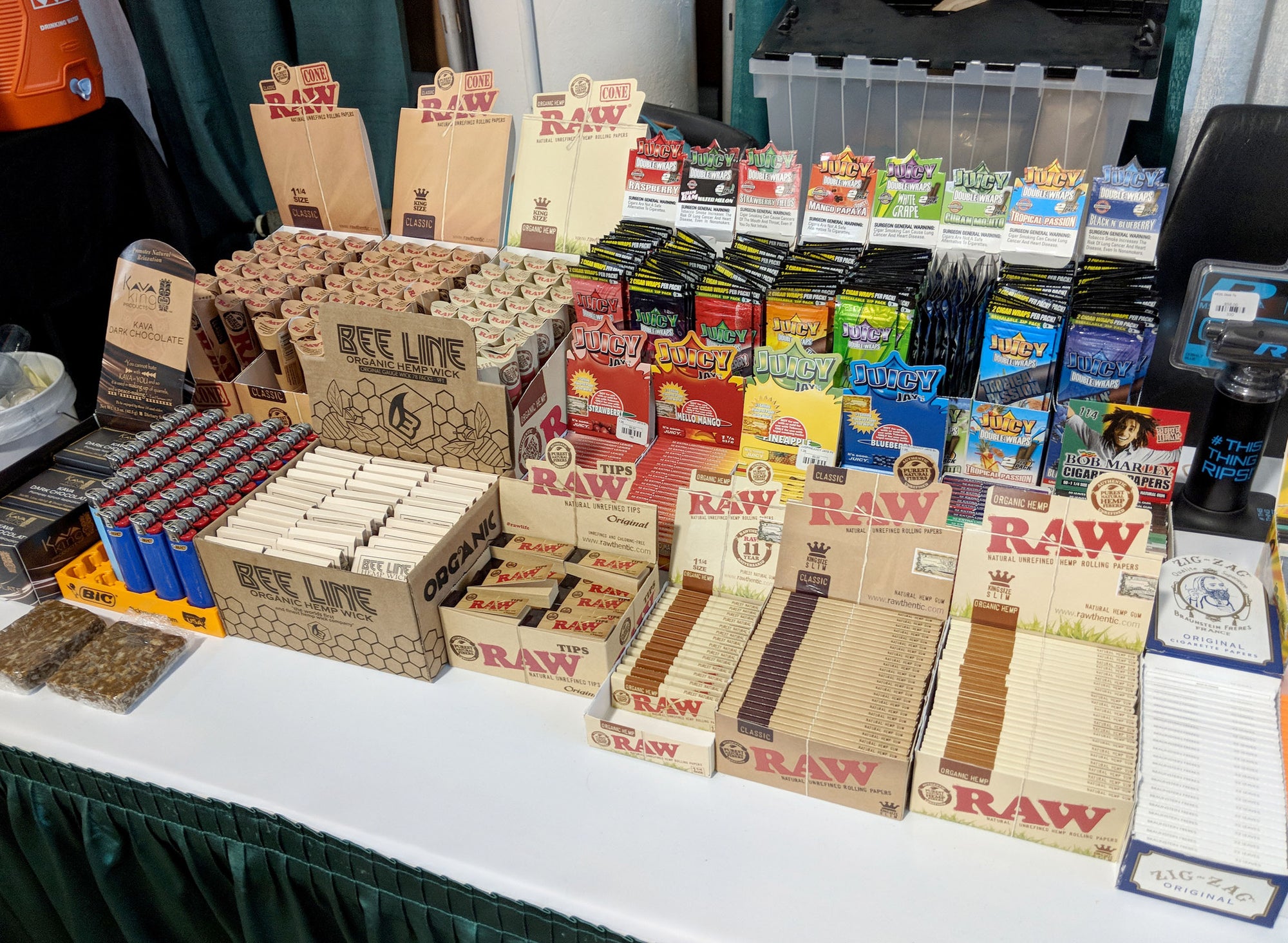
business tips
Understanding the Cost of RAW Rolling Papers: Retail and Wholesale Prices Explained
Table of Contents
Retail Price Factors for RAW Rolling Papers
RAW Paper Pack Sizes and Price Points
Gas Station and Convenience Store Pricing
Wholesale Purchasing Options and Savings
Authentic vs. Counterfeit: Price Implications
Market Comparison: How RAW Papers Stack Up
nnUnderstanding the Cost of RAW Rolling Papers: Retail and Wholesale Prices ExplainednnRAW rolling papers have established themselves as a premium choice for smoking enthusiasts, known for their natural, unbleached composition and distinctive brown appearance. As their popularity continues to rise, consumers and retailers alike often wonder about pricing structures, from single packs to wholesale quantities. This comprehensive guide breaks down the factors affecting the price of RAW papers across different purchasing channels.nnRetail Price Factors for RAW Rolling PapersnnSeveral factors influence how much RAW papers cost at the retail level. The price varies based on the specific product line, size, and where you're purchasing them. RAW offers several distinct lines including Classic, Organic Hemp, and Black, each commanding different price points.nnLocation significantly impacts pricing, with urban areas and specialized smoke shops often charging premium prices compared to online retailers. According to this guide on buying RAW rolling papers, prices can vary by as much as 30% between physical stores and online outlets.nnRAW Paper Pack Sizes and Price PointsnnSingle PacksnnA standard single pack of RAW Classic King Size papers typically retails between $2-4, containing 32-40 leaves depending on the specific product. The RAW Organic Hemp line usually costs about $0.50-1.00 more per pack than the Classic line, reflecting its organic certification and specialized manufacturing process.nnThe premium RAW Black line, discussed in detail in this article about RAW Black papers, typically costs $3-5 per pack, making it the most expensive option in the standard lineup.nnMulti-Packs and BundlesnnMulti-packs offer better value, with 3-packs of Classic King Size papers typically priced between $5-8, representing savings of approximately 15-20% compared to buying individual packs. Many retailers also offer bundles that include papers, tips, and trays, which can range from $10-25 depending on the components.nnHighlight: The average price of a standard pack of RAW Classic papers ranges from $2-4 retail, while specialty lines like RAW Black can cost up to $5 per pack.nnGas Station and Convenience Store PricingnnFor many consumers, gas stations represent the most accessible point of purchase for rolling papers. How much are RAW papers at the gas station? Typically, consumers can expect to pay a premium of 20-30% over smoke shop prices.nnA standard pack of RAW Classic papers at gas stations usually costs between $3-5, while the Organic Hemp and Black varieties might reach $5-7 per pack. This markup reflects the convenience factor and higher overhead costs of these retail environments.nnConvenience stores typically stock only the most popular sizes and varieties, with King Size and 1 ¼ being the most common. For specialty sizes or types described in this guide to RAW paper sizes, consumers generally need to visit smoke shops or online retailers.nnWholesale Purchasing Options and SavingsnnFor businesses and high-volume consumers, RAW papers wholesale options provide significant savings. Wholesale pricing typically begins at orders of 6-10 boxes (each containing 24-50 packs depending on the product).nnWholesale prices can reduce the cost per pack by 40-60% compared to retail prices, with standard RAW Classic packs often available for as low as $0.75-1.50 per pack when purchased by the box. While exploring alternative premium rolling products like OCB cones, many retailers find that diversifying their inventory with both RAW and competing brands maximizes their profit potential.nnMinimum Order QuantitiesnnMost wholesale distributors require minimum order quantities (MOQs) ranging from $100-500, making these options viable primarily for businesses rather than individual consumers. Some distributors offer tiered pricing, with greater discounts at higher volume thresholds.nnnEntry-level wholesale (6-10 boxes): 40-45% off retailnMid-tier wholesale (11-25 boxes): 45-55% off retailnHigh-volume wholesale (26+ boxes): 55-60%+ off retailnnnAuthentic vs. Counterfeit: Price ImplicationsnnThe popularity of RAW papers has led to a significant counterfeit market. Suspiciously low prices often indicate counterfeit products, which may sell for 30-50% less than authentic papers. As detailed in this resource on RAW papers authenticity, counterfeit products may contain harmful chemicals and provide an inferior smoking experience.nnAuthentic RAW papers feature specific security measures including microtext, specialized watermarks, and unique criss-cross watermarks. While these authentic features add to production costs and retail price, they ensure product safety and quality.nnMarket Comparison: How RAW Papers Stack UpnnWhen comparing RAW papers price points to competitors, RAW typically positions itself in the premium segment of the market. Standard RAW papers cost approximately 15-25% more than basic competitors like Zig-Zag or Top, but offer distinct advantages in terms of material quality and brand reputation.nnPremium competitors like Elements and OCB typically price similarly to RAW, with variations of $0.25-0.75 per pack depending on the specific product line. The diverse options within the RAW lineup, explored in this guide to RAW paper types, allow consumers to find products at various price points within the brand family.nnFor businesses looking to maximize margins while still offering premium products, exploring a mix of RAW papers alongside other high-quality alternatives creates a balanced inventory that serves diverse customer needs and price sensitivities.
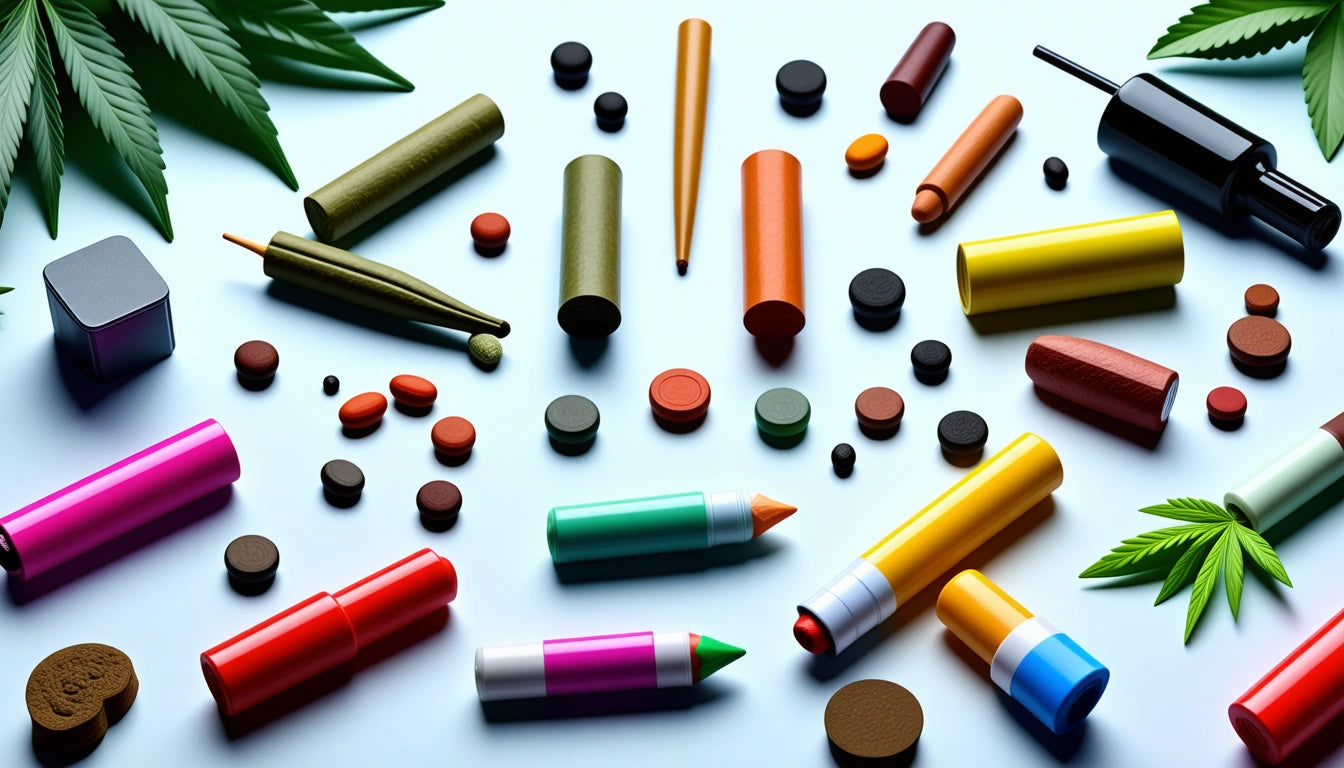
business tips
Understanding the Cost of Prerolls: A Comprehensive Guide
Table of Contents
Average Preroll Costs Across Dispensaries
Factors Affecting Preroll Prices
Preroll Types and Their Price Points
Regional Price Variations for Prerolls
Maximizing Value When Purchasing Prerolls
For both new and experienced cannabis consumers, understanding how much prerolls cost can help make informed purchasing decisions. Prerolls offer convenience and consistency, but their prices vary widely based on several factors. This guide breaks down what influences preroll pricing and what you can expect to pay at dispensaries across different regions.Average Preroll Costs Across DispensariesThe cost of a standard preroll typically ranges from $5 to $15 for a single gram joint. However, premium options, infused varieties, or multi-packs can cost anywhere from $20 to $50 or more. According to market data, the national average price for a basic one-gram preroll hovers around $10-12 in legal markets.For bulk purchases, many dispensaries offer preroll packs (typically containing 5-7 joints) at discounted rates, usually between $30-$60 depending on quality and market. These multi-packs often provide better value compared to purchasing individual prerolls.Factors Affecting Preroll PricesFlower Quality and PotencyThe quality of cannabis flower used significantly impacts how much a preroll costs. Budget prerolls often contain trim or shake (leftover plant material), while premium options use high-quality flower from specific strains. THC percentage and overall potency also influence pricing, with higher-potency options generally commanding higher prices.Size and Weight ConsiderationsStandard prerolls contain about one gram of cannabis, but preroll weights can vary significantly. Mini prerolls (0.3-0.5g) typically cost $3-7, while larger options (2g+) can range from $20-30. Understanding these weight variations helps consumers compare prices more effectively.Brand Reputation and PackagingEstablished cannabis brands often charge premium prices for their prerolls. This premium reflects not just quality assurance but also investments in compliant packaging. Many top-tier products use specialized child-resistant packaging that meets safety regulations, as outlined in consumer safety guidelines for proper packaging standards, which adds to production costs but ensures product safety.Highlight: The average cost of a standard one-gram preroll ranges from $5-15, while premium or infused options can cost $15-25 or more per unit.Preroll Types and Their Price PointsStandard PrerollsBasic prerolls containing ground cannabis flower typically cost $5-15 depending on quality and location. These represent the entry-level option for most consumers and are widely available at dispensaries.Infused PrerollsInfused prerolls, which contain concentrates, kief, or oils for enhanced potency, command higher prices. These specialty products typically cost $15-30 per unit, with some premium options reaching $40 or more. The additional processing and higher THC content justify the increased price point.Blunts and Specialty RollsCannabis blunts (wrapped in tobacco leaf or hemp) and other specialty rolls generally cost more than standard paper joints. Pre-rolled blunts typically cost $10-25 each, with premium options reaching $30 or more, particularly for larger sizes containing 2+ grams.Regional Price Variations for PrerollsCannabis prices vary significantly by location due to state regulations, taxes, and market maturity:
Mature Markets (Colorado, Oregon, Washington): More competitive pricing with standard prerolls often available for $5-10
Newer Markets (Illinois, Massachusetts): Higher prices with basic prerolls starting at $12-18
Limited License States (Florida, New York): Premium pricing with standard prerolls often costing $15-25
Taxes also significantly impact final prices, with some states imposing combined taxes exceeding 30% on cannabis products. Understanding local tax structures helps consumers anticipate the total cost at checkout.According to dispensary data, consumers can generally expect to pay 20-40% more for the same preroll in newer markets compared to established ones. This price gap tends to narrow as markets mature and competition increases.Maximizing Value When Purchasing PrerollsTo get the best value when buying prerolls, consider these strategies:
Look for first-time customer discounts at dispensaries (often 10-20% off)
Take advantage of daily deals and happy hour specials
Join loyalty programs for ongoing savings
Purchase multi-packs instead of individual prerolls
Compare prices across multiple dispensaries using online menus
Many dispensaries offer significant discounts on certain days of the week or for specific product categories. Some offer as much as 30% off prerolls on designated days, making these optimal times for stocking up.For those interested in trying premium options, exploring top-rated preroll brands can provide insights into which products offer the best quality-to-price ratio. While premium brands cost more upfront, they often provide better experiences that justify the additional expense.Understanding preroll shelf life and storage requirements can also help maximize value by ensuring purchased products remain fresh and potent until consumed.As the cannabis market continues to evolve, staying informed about pricing trends and product innovations helps consumers make cost-effective choices that align with their preferences and budget constraints.
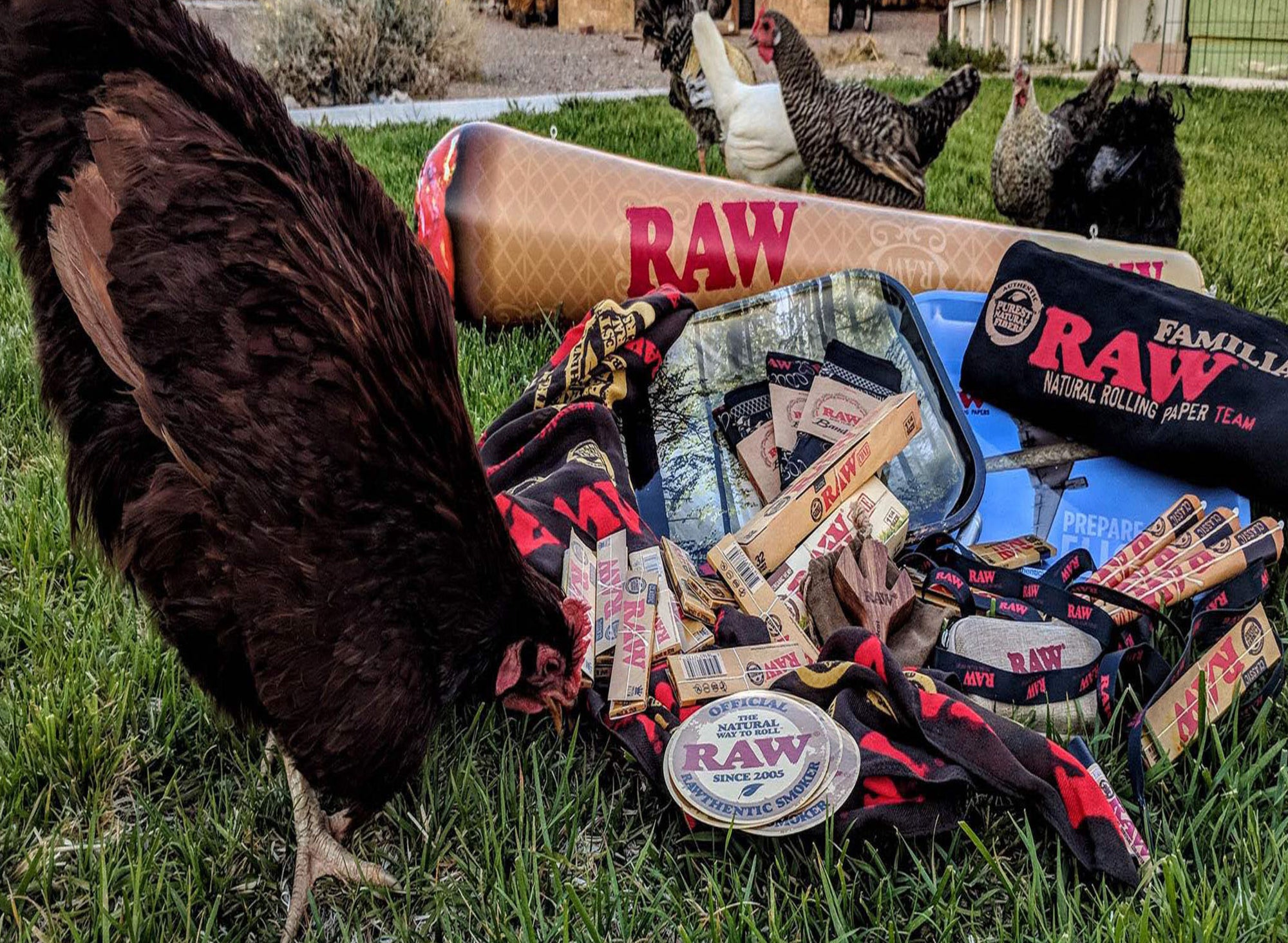
branding
Understanding RAW Image Format: Distribution and Authenticity
Table of Contents
Understanding the RAW Brand: Origins and Philosophy
Authentic RAW Distribution Channels: Where to Find Real Products
Spotting Authentic RAW Products: Key Identifiers
The RAW Product Range: Beyond Rolling Papers
The Counterfeits Market: Protecting Yourself from Fake RAW Products
The Future of RAW Distribution: Innovation and Accessibility
Understanding RAW Image Format: Distribution and AuthenticityThe RAW brand has established itself as a cornerstone in the rolling paper industry, known for its unbleached, unrefined products that appeal to purists and enthusiasts alike. As the brand's popularity has soared, so has the importance of understanding RAW distribution channels and how to identify real RAW products in a market increasingly saturated with counterfeits.Understanding the RAW Brand: Origins and PhilosophyRAW was founded with a commitment to creating pure, unrefined products that maintain the integrity of natural materials. The company's ownership and global presence have expanded significantly over the years, yet they've maintained their core philosophy of "RAWthentic" products that are additive-free and environmentally conscious.This dedication to purity isn't just marketing; it's embedded in every aspect of their manufacturing process. The brand's commitment to quality control ensures that authentic products maintain consistent standards across all distribution channels.Authentic RAW Distribution Channels: Where to Find Real ProductsFinding real RAW products requires understanding legitimate distribution networks. Authorized retailers, both physical and online, represent the safest channels for purchasing authentic RAW merchandise. Our guide to finding RAW skins and gift sets online provides comprehensive information on verified sellers.When exploring options for premium rolling supplies, many consumers also consider alternatives from other reputable brands. At Smoke Cones, we offer high-quality pre-rolled cones from Futurola that complement the natural smoking experience many RAW enthusiasts appreciate.Official Distribution NetworksRAW maintains strict control over its distribution channels to ensure product authenticity. Their products typically move through:
Authorized wholesalers
Licensed smoke shops and dispensaries
Official online retailers
Select convenience stores with proper certification
This controlled distribution helps maintain product integrity and reduces the chance of counterfeit items entering the market.Highlight: Always purchase RAW products from authorized retailers to ensure authenticity and support legitimate distribution channels.Spotting Authentic RAW Products: Key IdentifiersIdentifying real RAW products requires attention to detail. Our guide to RAWthentic products outlines several key identifiers:Packaging VerificationAuthentic RAW packaging features specific elements:
Precise color matching (not overly bright or dull)
Clear, crisp printing without blurriness
Proper alignment of all graphic elements
Accurate spelling and consistent font usage
Unique batch codes that can be verified
Product Quality IndicatorsThe products themselves also provide clues to authenticity:
Consistent coloration throughout papers
Even thickness and texture
Proper watermarks visible when held to light
Clean cutting with no rough edges
Natural smell without chemical odors
The RAW Product Range: Beyond Rolling PapersRAW's product line extends well beyond basic rolling papers, encompassing a comprehensive ecosystem of smoking accessories. Understanding this range helps consumers identify potential counterfeits that may not align with official offerings.The brand's commitment to natural living is reflected across their product line, as detailed in our exploration of embracing the RAW life. This philosophy extends to their distribution practices, which prioritize environmental responsibility and sustainable packaging.The Counterfeits Market: Protecting Yourself from Fake RAW ProductsAs RAW's popularity has grown, so has the counterfeit market. These fake products not only potentially contain harmful additives but also undermine the brand's quality standards and ethical commitments.Common Counterfeit Red Flags
Significantly lower pricing than standard market rates
Packaging inconsistencies or poor print quality
Missing or incorrect security features
Unusual distribution channels or unauthorized sellers
Product performance issues (uneven burning, off tastes)
RAW has implemented several anti-counterfeiting measures, including QR code verification systems and specialized printing techniques that are difficult to replicate. Our article on RAW brand authenticity provides detailed guidance on using these tools.The Future of RAW Distribution: Innovation and AccessibilityRAW continues to evolve its distribution strategies to combat counterfeiting while improving accessibility. Digital verification systems, blockchain tracking, and expanded authorized retailer networks represent the next frontier in ensuring that consumers receive genuine products.As the market for natural smoking accessories grows, RAW's commitment to authenticity serves as a model for the industry. By supporting legitimate distribution channels and learning to identify real RAW products, consumers not only protect themselves but also support the ethical and environmental standards that define the brand.Whether you're a longtime enthusiast or new to the world of RAW, understanding distribution channels and authenticity markers ensures you experience these products as they were intended. And remember, for those exploring options beyond RAW, quality alternatives like those in our curated collections provide additional choices for the discerning consumer.

flower
Mastering the Art of Even and Slow-Burning Joints: Tips and Solutions
Table of Contents
Understanding Joint Combustion: The Science Behind the Burn
Common Causes of Uneven Burning Joints
Proper Rolling Techniques for Even Burns
Quality Materials Matter: Papers, Filters, and Flower
Slow-Burning Solutions: Making Your Joint Last Longer
Fixing Burning Issues Mid-Session
Advanced Strategies for Perfect Joint Combustion
Few things are more frustrating than watching your carefully rolled joint burn unevenly or too quickly. Whether you're wondering why your joints burn unevenly or searching for ways to make a joint burn slower, this guide covers the science, techniques, and practical solutions to achieve that perfect, even burn every time.Understanding Joint Combustion: The Science Behind the BurnBefore diving into solutions, it helps to understand what's actually happening when a joint burns. Cannabis typically combusts at temperatures between 350-450 °F (175-230 °C), though what temperature a joint burns at can vary based on several factors including airflow, moisture content, and material density.When a joint burns unevenly, it's often because one side is receiving more oxygen or contains material that's packed differently than the rest. This creates what's commonly called "canoeing" or "running" – when one side burns faster than the other, creating an uneven edge that resembles a canoe.As explained in this detailed guide on preventing canoeing, understanding airflow dynamics is crucial to maintaining an even burn.Common Causes of Uneven Burning JointsIf you're constantly asking "why do my joints burn unevenly?" consider these common culprits:
Uneven grinding of cannabis flower
Improper packing (too tight or too loose)
Inconsistent rolling technique
Wind or external air currents
Moisture variations in your cannabis
Low-quality rolling papers
Improper lighting technique
Each of these factors can significantly impact how evenly your joint burns. For instance, cannabis that's too moist will burn slowly and unevenly, while overly dry cannabis burns too quickly.Highlight: The most common reason joints burn unevenly is improper material distribution during rolling. Ensuring even grinding and consistent packing pressure solves most burning issues.Proper Rolling Techniques for Even BurnsLearning how to get a joint to burn evenly starts with proper rolling technique. Mastering joint rolling techniques involves several key steps:The Perfect GrindAim for a medium-fine, consistent grind. Too coarse and you'll get air pockets; too fine and it might restrict airflow. A quality grinder is worth the investment for achieving consistency.Even DistributionBefore rolling, distribute your ground cannabis evenly along the paper. Any lumps or thin spots will cause uneven burning later.Proper Packing PressureThe ideal joint is firm enough to maintain structure but not so tight that air can't flow through. Practice finding the sweet spot between too loose (burns too fast) and too tight (difficult to draw).As detailed in this comprehensive joint rolling guide, mastering these fundamentals creates the foundation for an evenly burning joint.Quality Materials Matter: Papers, Filters, and FlowerThe materials you use significantly impact how your joint burns. For those seeking to make joints burn slower and more evenly, consider upgrading your supplies:Rolling PapersThinner papers generally burn more evenly but faster. Thicker papers or those made from hemp or rice can burn more slowly. Brands like RAW, Elements, and OCB are popular for their consistent burning properties.Proper StorageKeeping your cannabis at the right humidity level is crucial. Too dry and it burns too quickly; too moist and it burns unevenly. Proper storage containers or quality mylar bags designed for cannabis storage can help maintain optimal moisture levels for a perfect smoke.Quality Filters/CrutchesA well-made filter improves airflow and provides structure to your joint. Pre-made filter tips ensure consistency, though you can make your own from appropriate cardstock.Using quality materials from the start prevents many common burning issues before they begin.Slow-Burning Solutions: Making Your Joint Last LongerIf you're specifically wondering how to make a joint burn slower, try these proven techniques:
Honey Method: Lightly coat the outside of your rolled joint with a thin layer of honey, then let it dry. The sugar creates a slower burn.
Double-Wrapping: Using two rolling papers creates a thicker barrier that burns more slowly.
Inside-Out Rolling: This technique (also called backrolling) uses less paper, creating a smoother, slower burn.
Proper Moisture Content: Slightly moister cannabis burns more slowly, though too moist will cause uneven burning.
As explained in this guide on preserving joints, these methods can significantly extend your smoking session.Fixing Burning Issues Mid-SessionEven with perfect preparation, sometimes joints start burning unevenly. Here's how to stop a joint burning incorrectly mid-session:The Lick MethodIf one side is burning faster, lightly dampen (with saliva) the paper on the fast-burning side. This temporarily slows that side, allowing the slower side to catch up.Rotation TechniqueConsistently rotating the joint while smoking helps maintain even burning by distributing the heat uniformly around the circumference.Ash ManagementRegularly ash your joint to remove the burnt material that can affect airflow and cause uneven burning.These quick fixes can salvage an unevenly burning joint without needing to restart.Advanced Strategies for Perfect Joint CombustionFor those seeking to truly master joint combustion, these advanced techniques can help achieve the perfect burn:Temperature and Environment Control: Smoking in a wind-protected area with moderate humidity provides optimal burning conditions.Multi-Material Joints: Incorporating concentrates like wax into joints can alter burning characteristics, often slowing the burn rate while increasing potency.Specialized Rolling Methods: Techniques like the plumber's joint (with a central airway) or cross-joint construction can create unique burning profiles for specific experiences.Paper Alternatives: Hemp wraps, corn husks, or other natural wrapping materials offer different burning characteristics that may better suit your preferences.By understanding the science behind combustion and implementing these techniques, you can transform your smoking experience from frustrating to fantastic. Remember that practice makes perfect, and even expert rollers occasionally encounter burning issues. The key is to learn from each roll and continuously refine your technique.
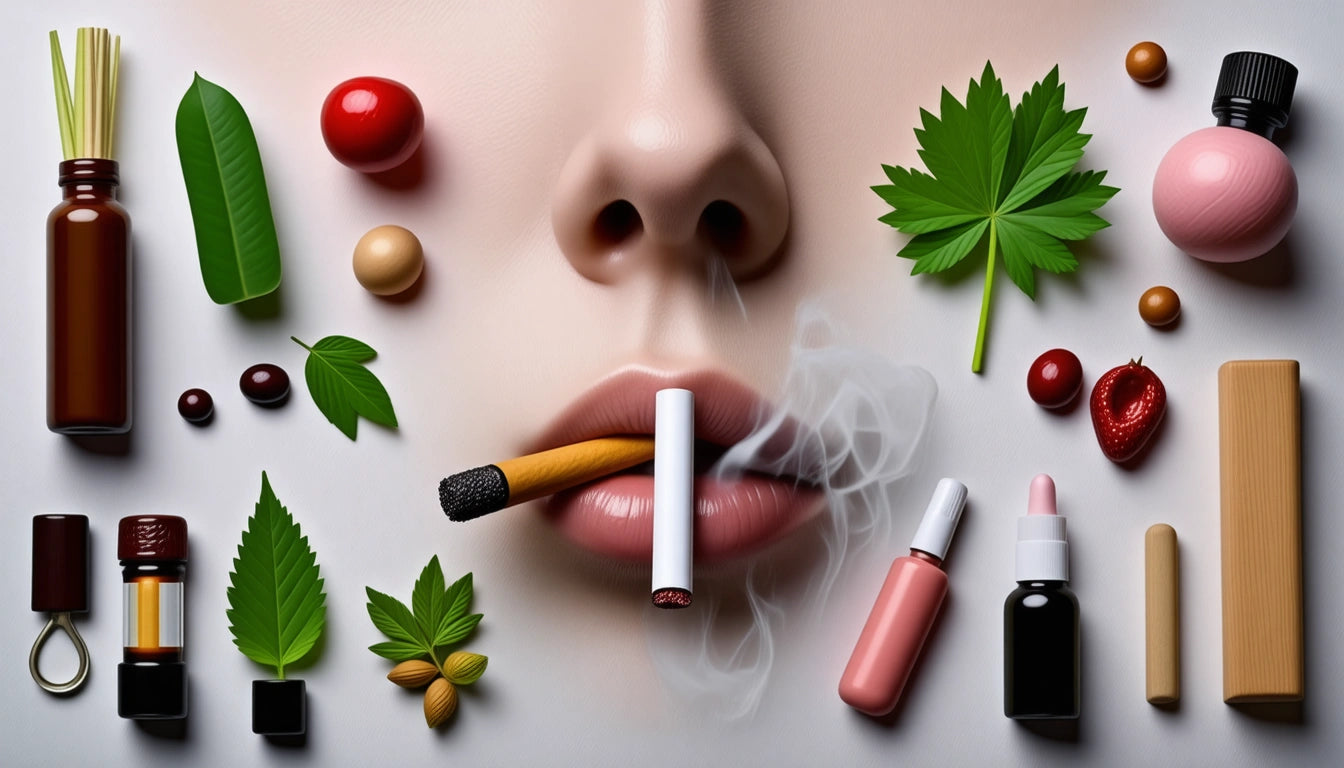
flower
Mastering the Art of Smoking a Joint: Techniques and Tips
Table of Contents
Joint Smoking Basics: Getting Started
Proper Inhalation Techniques for Maximum Enjoyment
Ash Management and Interpretation
Joint Preservation: How to Put Out and Save for Later
Advanced Techniques and Variations
Smoking Etiquette and Best Practices
Whether you're new to cannabis or looking to refine your technique, knowing how to smoke a joint properly can enhance your experience and help you get the most out of your session. From proper inhalation to ash management, this guide covers everything you need to know about the art and science of joint smoking.Joint Smoking Basics: Getting StartedBefore diving into advanced techniques, it's important to understand the fundamentals of how to smoke a joint. A properly rolled joint should be firm but not too tight, allowing for smooth airflow while burning evenly. According to comprehensive joint guides, the key to a good smoking experience begins with quality preparation.To start smoking:
Hold the joint between your thumb and index finger near the filter or crutch
Light the twisted end (tip) with a lighter or hemp wick
Rotate the joint while lighting to ensure an even burn
Once lit, take a small initial puff to establish the burn
For those who prefer pre-rolls, specific techniques can help ensure a smooth experience without the rolling work.Proper Inhalation Techniques for Maximum EnjoymentLearning how to inhale a joint properly is crucial for both enjoyment and efficiency. Many newcomers make the mistake of not inhaling deeply enough or holding the smoke too long.The Two-Step Inhale MethodFor the best results when learning how to inhale joint smoke:
Draw the smoke into your mouth first (like sipping through a straw)
Then take a second breath of fresh air to push the smoke into your lungs
Hold briefly (1-2 seconds is sufficient) then exhale slowly
This technique allows you to taste the terpenes while effectively absorbing the active compounds. Research on smoking methods indicates that longer holds don't necessarily increase effects but may increase irritation.Proper storage is just as important as proper smoking technique. Many enthusiasts use high-quality storage solutions to maintain freshness and potency of their flower before rolling, ensuring the best possible joint smoking experience.Ash Management and InterpretationWhat Does Black Ash Mean in a Joint?Ash color can tell you a lot about your cannabis and how well it's burning. White or light gray ash typically indicates properly cured cannabis and a clean burn. Black ash, however, often suggests:
Moisture content is too high
Incomplete curing of the cannabis
Presence of residual nutrients or pesticides
Poor burning due to tight rolling
How to Ash a Joint ProperlyTo ash a joint without damaging it:
Gently tap the joint against an ashtray when ash builds up
Avoid pressing or crushing the tip, which can affect airflow
For stubborn ash, a gentle twist while tapping can help
Mastering even burns can help prevent uneven ashing and improve the overall experience.Joint Preservation: How to Put Out and Save for LaterKnowing how to put out a joint mid smoke is an essential skill for conserving your cannabis:
Gently tap or blow on the cherry (lit end) until it stops glowing
Avoid crushing or twisting too aggressively, which can damage the joint
Store in an airtight container to preserve freshness and prevent odor
When you're ready to relight, gently scrape off the charred tip before lighting to remove the stale taste. Preservation techniques can extend the life of your joints and maintain quality between sessions.Advanced Techniques and VariationsHow to Smoke Resin in a JointFor those interested in how to smoke resin in joint form, there are several approaches:
Adding concentrates to the inside of a joint (known as "twaxing")
Applying a thin layer to the outside paper
Mixing resin with flower for enhanced potency
When incorporating concentrates, proper techniques ensure even burning and prevent wastage.Filterless SmokingWhile filters (or crutches) are common, some prefer filterless joints. If you're exploring rolling without filters, be aware that technique adjustments are necessary to prevent loose cannabis from entering your mouth.Smoking Etiquette and Best PracticesThe best way to smoke a joint isn't just about technique but also about etiquette and safety:
Puff, puff, pass: Take two hits before passing to maintain session flow
Avoid "camping" (holding the joint while talking)
Don't wet the tip excessively with saliva ("lip the joint")
Be mindful of proper disposal to prevent fire hazards
Know when to stop and be aware of your limits
Safety considerations extend beyond the session itself. Understanding timing between consumption and activities like driving is crucial for responsible use.By mastering these techniques and understanding the nuances of how to properly smoke a joint, you'll enhance not only your personal experience but also become a more considerate participant in social smoking settings. Remember that practice leads to perfection, and each session is an opportunity to refine your approach to this time-honored consumption method.

